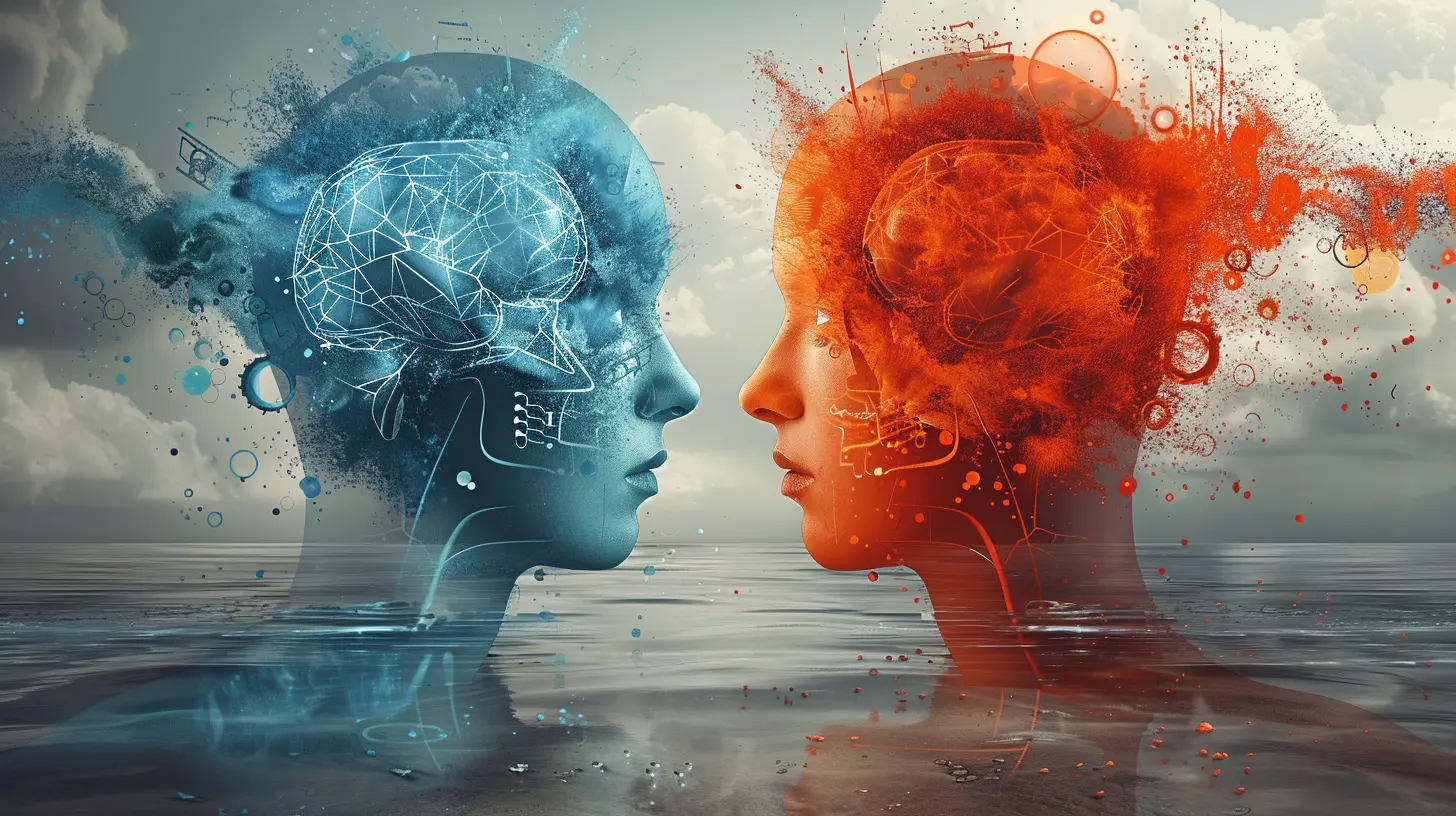Understanding the Psychology of Consumer Behavior
11 October 2025
Have you ever walked into a store just to browse and somehow walked out with a bag full of things you didn’t even plan to buy? Or maybe you’ve added something to your online cart just because it was labeled “limited-time offer”? If so, you’re not alone—and that, my friend, is the psychology of consumer behavior doing its magic.
In today’s world of constant advertising and endless buying options, understanding why people make the purchases they do is more important than ever. Whether you’re a business owner, marketer, or just curious about your own habits, diving into the psychology behind consumer behavior can reveal a lot about what really drives people to spend their hard-earned money.
Let’s dig into how our minds influence our buying decisions—and trust me, it’s more than just liking a product.
What Is Consumer Behavior, Really?
Let’s start with the basics. Consumer behavior is essentially the study of how people make decisions about what they buy, want, need, or act on. It includes everything from researching a product to the actual purchase, and even the feelings after the purchase is made.Think of it as a big cocktail of emotions, experiences, social influence, marketing, personal preferences, and even subconscious triggers. It’s not just about what people say they want—it’s about what actually motivates them to click ‘Buy Now.’
The Psychology Behind Buying: It’s Not Just Logic
Here’s the thing—most of us like to believe we shop rationally. We want to think we weigh the pros and cons and make informed decisions. But truth bomb? A huge chunk of our buying decisions is driven by emotion, not logic.🧠 Emotional Triggers
Emotions play a massive role in how and what we buy. People often buy to feel good, not just to fulfill a need. Ever heard of retail therapy? Yeah, that’s a real thing.For instance:
- Some people buy luxury items not because they need them, but because they get a sense of status or pride.
- Others might buy comfort food when they’re sad, stressed, or nostalgic.
Emotions like happiness, fear, sadness, or excitement can all push us to make purchases that we didn’t plan on.
🧠 Cognitive Biases
Our brains are wired with shortcuts—called cognitive biases—that help us make quick decisions. Handy for survival, but tricky when shopping. A few big ones include:- Anchoring Effect: We rely too heavily on the first piece of information we get. If you see a handbag marked down from $300 to $150, it feels like a deal, even if $150 is still steep.
- Social Proof: We tend to follow the crowd. If a product has hundreds of good reviews or is labeled “best-seller,” you’re more likely to trust it.
- Scarcity Principle: Items seem more valuable when they're limited in quantity or availability ("Only 2 left!" works surprisingly well).
The Buying Process: A Psychological Journey
Let’s walk through the mental steps most people take before making a purchase. It’s kind of like a little story your brain tells itself.1. Problem Recognition
This is the “Uh-oh, I need something” moment. Maybe your phone is lagging, or your jeans just ripped. This is where desire—or need—begins.2. Information Search
Now the wheels start turning. You hit Google, ask friends, or scroll reviews. You’re trying to figure out what's out there and what’s worth your money.3. Evaluation of Alternatives
Here’s where comparisons happen. Smartphone A vs. Smartphone B. You weigh the pros, the cons, the prices, the features. But remember—emotion sneaks in here too. A sleek design might tip the scale over a better camera.4. Purchase Decision
Finally, your brain makes its choice. Sometimes it’s quick, sometimes it takes days (ever abandoned a cart online for a week?). Either way, decision fatigue is real, and brands know this.5. Post-Purchase Behavior
The story doesn’t end at checkout. Are you thrilled with your purchase, or do you regret it? Your experience influences future decisions and even word-of-mouth recommendations.
Key Psychological Factors That Influence Buying Behavior
Alright, now that we’ve mapped out the buying journey, let’s zoom in on the psychological elements that shape it.1. Motivation
What do you really want from a purchase? Not everything is about need. Maslow’s hierarchy of needs is a classic framework here. Basic stuff like food and safety come first. But many purchases fall into higher categories—like esteem (buying a luxury watch) or self-actualization (investing in a course to grow as a person).2. Perception
Each of us sees the world through a unique filter made up of our past experiences, expectations, and beliefs. This affects how we perceive brands and products. A simple logo or slogan can trigger trust—or skepticism.3. Learning and Experience
If you had a bad experience with a certain brand, chances are you’ll avoid it in the future. But if you had a great one, you might become loyal. Repeated exposure can also influence your choices. Ever found yourself humming a jingle and then buying that exact cereal?4. Beliefs and Attitudes
Your beliefs (formed over time) and attitudes (your learned tendencies) significantly affect what you buy. If you believe organic food is healthier, you’ll likely choose it—even if it costs more.Culture and Social Influence: You’re Not Shopping Alone
Even if you think you’re totally in control, your environment plays a big part in shaping your buying behavior.Family and Friends
Think back to when you were a kid. Did you want a particular brand just because your friends had it? That influence doesn’t magically go away in adulthood.Recommendations from people we trust carry serious weight. That’s why influencer marketing is booming—people feel like they know the influencers, even if they’ve never met them.
Culture and Lifestyle
Your cultural background influences everything from the food you buy to how you decorate your home. Lifestyle choices also matter—a minimalist will shop very differently from someone who loves collecting things.Social Class
Your income and social background subtly (or not so subtly) affect your spending patterns. It can impact what you aspire to buy and how you define value or success.The Role of Branding and Marketing: Tricking the Brain (Kind of)
Marketers are basically mind-readers trained to tap into your psychological triggers. A strong brand doesn’t just sell a product—it sells a story, a feeling, a lifestyle.Think about Apple. People don’t just buy iPhones for the specs. They buy into the sleek, innovative, “cool tech” lifestyle. That’s psychology at work.
Color Psychology
Colors can affect mood and perception. Red creates urgency (used in clearance sales), while blue builds trust (used in many banks). Brands carefully choose their colors to provoke the right emotions.Storytelling
We connect with stories more than stats. A brand that tells a compelling story about how their product came to be—or who it helps—can create a deeper emotional bond with customers.How Digital World Has Changed Consumer Behavior
The online shopping world has turned everything upside down. We no longer wait for store hours or word-of-mouth. Now, the internet is our marketplace, review guide, and shopping assistant all in one.Instant Gratification
Online shopping feeds into our desire for speed and convenience. With a few taps, the product is on its way to your doorstep. No lines, no waiting, just dopamine.Social Media Influence
Scroll your feed and you’ll find countless ads disguised as posts. Ever bought something just because your favorite YouTuber recommended it? You're not alone.Customer Reviews = Social Validation
These days, we trust strangers on the internet more than we trust ads. A well-rated product with glowing reviews is more convincing than the fanciest commercial.Ethical Considerations: Is it Manipulation?
This is where things get a bit murky. If companies understand how our brains work, is it ethical for them to use that knowledge to push sales?Some argue that as long as it’s truthful, it’s fair game. Others believe tapping into emotional vulnerabilities (like fear of missing out) crosses a line.
The truth? It’s a gray area. As consumers, being aware of the tactics can help us make more conscious choices. As brands, a little ethics can go a long way in building trust.
Conclusion: The More You Know, The Smarter You Shop
Understanding the psychology of consumer behavior isn’t just a tool for marketers—it’s a lens we can all use to better understand our own habits. When you know why you’re drawn to certain products, you can start shopping more mindfully and maybe save yourself from some unnecessary impulse buys.At the end of the day, we’re all just humans trying to make choices in a world full of options. And trust me, knowing a bit of psychology can go a long way in decoding the “why” behind the buy.
all images in this post were generated using AI tools
Category:
Psychological ResearchAuthor:

Alexandra Butler
Discussion
rate this article
1 comments
Talia Stevens
This article provides valuable insights into consumer behavior, highlighting how psychological factors influence purchasing decisions. It's a must-read for anyone interested in marketing and consumer trends.
October 13, 2025 at 4:52 PM


